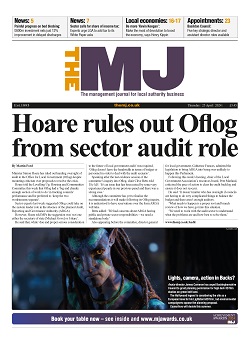Jason Strelitz and Rebecca Eligon reveal how #HelpNewham hubs are reaching out to shielded and vulnerable residents. They also consider how to build on this work to offer assistance for an emerging ‘test, trace, isolate and support’ system
I n our most recent residents’ survey, one fact stands out: nearly one in three people in Newham said they do not have a family member or friend they can rely on if they have a serious problem. Imagine that – more than 100,000 people living in one of the busiest capitals in the world who are alone during a crisis.
One story brought this to light recently: an older man living alone was called up by our staff to arrange a food parcel delivery. During the call, the resident collapsed and our colleague called for an ambulance immediately, staying with the gentleman on the phone to reassure him help was on the way. Had it not been for the call, we dread to think what might have happened.
Newham has been one of the most acutely affected parts of the country according to the ONS – indeed the death rate once adjusted for age is the highest in the country. The economic and social impact of COVID-19 in a borough like Newham is greater, with half of our children living in poverty, and many are lacking financial resilience: high levels of debt, very high renting population, large families, single parent households and amongst the lowest-wage workforces in the capital.
In the earliest stages of the emerging crisis we were as focused on these social vulnerabilities as well as the clinical vulnerabilities which have defined the Government shielding operation.
We built a structure of #HelpNewham hubs reaching out not just to those shielded but others as well, such as people over 70 living alone, and other vulnerable groups. So far we have spoken to more than 20,000 residents to identify need – and large proportions need support: 6,000 requiring food support, 2,500 befriending support and over 1,000 help getting prescriptions. In a month we have delivered more than 16,000 food parcels and delivered more than 5,000 prescriptions in partnership with TfL and London black cabs (Cityfleet).
When we started, we had no locations, no names, no confirmed supply chain, no data system, and no joint arrangements with the voluntary and community sectors. The response has shown local government’s capability to develop systems fast. We have been collaborating at speed, and using prototyping and service design to iterate, fail fast and get going using technology in smart ways, including developing a live map of voluntary and community sector provision, a virtual case management system, and a bespoke dashboard tracking demand.
We can’t do this on our own either. More than 100 voluntary, community and faith organisations across our borough are able to reach many who we cannot. We have supported 15 of these with new fridges and freezers so they can distribute fresh food. This new partnership with VCS and faith organisations has meant that more than 60 tonnes of surplus food which would otherwise have gone to landfill has gone to our residents – the equivalent of 148,000 meals.
We are working closely with the local mutual aid groups across the borough to enable and support them so that neighbours can help each other.
Wherever we are in the country, we know that local councils are on the frontline, ensuring our residents don’t fall through the cracks. We’re now thinking about the future – both the next phase of the pandemic response and the longer term.
For the next phase, we will continue to provide a safety net to those continuing to struggle through isolation over many months. But we are also considering how to build on our #HelpNewham work to ensure all our residents are supported to navigate the second, long, and more complex phase of the COVID-19 response. How do we ensure everyone is reached and where needed supported through an emerging ‘test, trace, isolate and support’ system?
As we have developed systems that link access to food to our population, mediated by supportive advice, we need the same for these new public health measures. This means building that partnership with communities though health champions and our voluntary and community sector. The aim is to ensure they are equipped with the knowledge to support those with whom they’re in contact.
We also need to ensure the system provides timeless data and intelligence so we can reach out to the settings – whether care homes, schools, or businesses – where there may be outbreaks to support timely intervention. Limiting the spread of COVID-19 remains the number one thing we can do to reduce the impact of the pandemic on our community.
In the longer term we have created a prototype of how we will continue to work with our local voluntary and community sector, enabling council staff to volunteer and stay connected with our communities and ensure that people in Newham are no longer hungry (for food or social connection), supporting all to live secure, independent and financially resilient lives.
Jason Strelitz is director of public health at Newham LBC, and Rebecca Eligon is director of #HelpNewham



